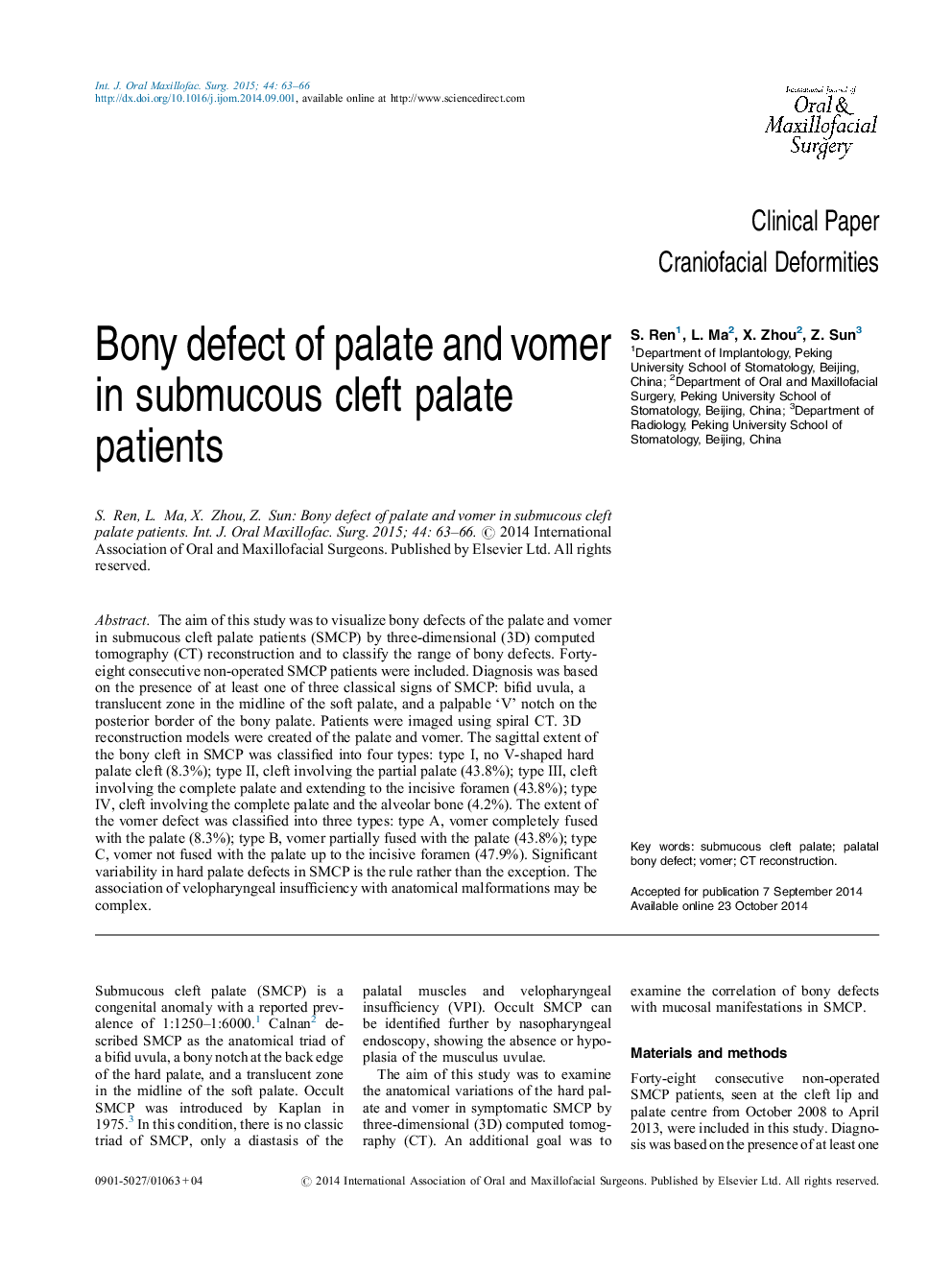| کد مقاله | کد نشریه | سال انتشار | مقاله انگلیسی | نسخه تمام متن |
|---|---|---|---|---|
| 3132242 | 1584133 | 2015 | 4 صفحه PDF | دانلود رایگان |
The aim of this study was to visualize bony defects of the palate and vomer in submucous cleft palate patients (SMCP) by three-dimensional (3D) computed tomography (CT) reconstruction and to classify the range of bony defects. Forty-eight consecutive non-operated SMCP patients were included. Diagnosis was based on the presence of at least one of three classical signs of SMCP: bifid uvula, a translucent zone in the midline of the soft palate, and a palpable ‘V’ notch on the posterior border of the bony palate. Patients were imaged using spiral CT. 3D reconstruction models were created of the palate and vomer. The sagittal extent of the bony cleft in SMCP was classified into four types: type I, no V-shaped hard palate cleft (8.3%); type II, cleft involving the partial palate (43.8%); type III, cleft involving the complete palate and extending to the incisive foramen (43.8%); type IV, cleft involving the complete palate and the alveolar bone (4.2%). The extent of the vomer defect was classified into three types: type A, vomer completely fused with the palate (8.3%); type B, vomer partially fused with the palate (43.8%); type C, vomer not fused with the palate up to the incisive foramen (47.9%). Significant variability in hard palate defects in SMCP is the rule rather than the exception. The association of velopharyngeal insufficiency with anatomical malformations may be complex.
Journal: International Journal of Oral and Maxillofacial Surgery - Volume 44, Issue 1, January 2015, Pages 63–66
